-
 Bitcoin
Bitcoin $105,532.8157
0.77% -
 Ethereum
Ethereum $2,548.2202
1.33% -
 Tether USDt
Tether USDt $1.0002
-0.03% -
 XRP
XRP $2.1658
1.38% -
 BNB
BNB $647.8634
0.54% -
 Solana
Solana $151.9004
5.13% -
 USDC
USDC $0.9998
-0.01% -
 Dogecoin
Dogecoin $0.1757
-0.78% -
 TRON
TRON $0.2728
1.24% -
 Cardano
Cardano $0.6296
0.95% -
 Hyperliquid
Hyperliquid $40.9018
1.86% -
 Sui
Sui $3.0030
4.30% -
 Bitcoin Cash
Bitcoin Cash $460.9894
8.08% -
 Chainlink
Chainlink $13.1954
1.60% -
 UNUS SED LEO
UNUS SED LEO $9.2807
2.61% -
 Avalanche
Avalanche $19.0609
0.65% -
 Stellar
Stellar $0.2573
0.56% -
 Toncoin
Toncoin $2.9704
1.32% -
 Shiba Inu
Shiba Inu $0.0...01197
-0.39% -
 Litecoin
Litecoin $85.9390
1.13% -
 Hedera
Hedera $0.1534
-0.05% -
 Polkadot
Polkadot $3.7860
0.74% -
 Ethena USDe
Ethena USDe $1.0000
-0.04% -
 Monero
Monero $317.1834
1.33% -
 Dai
Dai $0.9997
-0.02% -
 Bitget Token
Bitget Token $4.5199
-0.24% -
 Pepe
Pepe $0.0...01111
1.43% -
 Uniswap
Uniswap $7.1573
-0.52% -
 Pi
Pi $0.6033
-0.63% -
 Aave
Aave $273.9232
0.85%
Continuous small black lines at the bottom: a hidden method of main force absorbing funds?
Continuous small black lines on crypto charts may signal main forces quietly accumulating assets by creating minor sell-offs to absorb liquidity.
Jun 14, 2025 at 01:42 pm
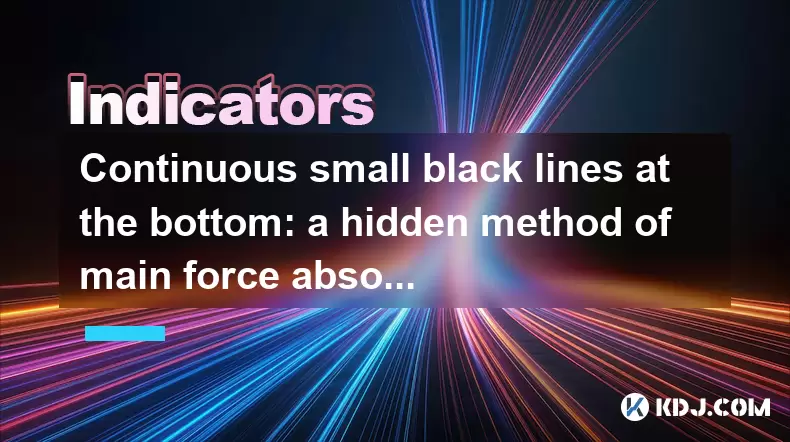
Understanding Continuous Small Black Lines in Cryptocurrency Charts
In the world of cryptocurrency trading, candlestick charts are essential tools for analyzing price movements. A continuous small black line at the bottom of a chart is often interpreted as a series of small bearish candles appearing repeatedly during a specific time frame. These patterns can sometimes indicate that large investors or "main forces" are manipulating the market.
The small black lines represent short-term downward price movements where sellers slightly overpower buyers. While individually insignificant, when they appear continuously, they may suggest a deliberate accumulation strategy by major players. This raises an important question: are these small declines orchestrated to absorb liquidity and prepare for a larger upward move?
What Are Main Forces in the Cryptocurrency Market?
In crypto terminology, main forces refer to institutional investors, whales, or groups with substantial capital capable of influencing market prices. Unlike retail traders who operate on smaller scales, main forces can inject or extract massive volumes of assets without immediate detection.
Their activities often manifest through subtle technical indicators, such as repeated small sell-offs followed by sudden spikes. When observed alongside continuous small black lines, it becomes plausible that these entities are quietly absorbing funds while keeping the price suppressed to avoid triggering panic among retail traders.
How Do Continuous Small Black Lines Form?
To understand how this pattern forms, we need to break down the mechanics of order books and trade executions:
- Small sell orders are placed just below the current market price
- These orders get filled gradually, causing minor dips represented by black lines
- The volume of each transaction remains low enough not to trigger significant price drops
- Meanwhile, buying pressure builds up subtly from hidden large buy orders
This process allows the main force to accumulate assets without revealing their true intentions. Each small black line serves as a camouflage for larger accumulation activities happening beneath the surface.
Identifying Hidden Accumulation Through Chart Patterns
Spotting potential main force activity requires careful observation of chart patterns. Here's what to look for:
- Repeated appearance of small black candles during sideways movement
- A lack of significant red (bearish) candles despite consistent selling pressure
- Sudden bullish surges following extended periods of minor declines
- Unusual trading volume during consolidation phases
Using tools like volume profile and order book depth analysis can further confirm whether these small black lines are part of a coordinated effort to absorb liquidity. Traders should also pay attention to on-chain metrics, such as large wallet movements and exchange inflows/outflows, to cross-validate suspicions.
Technical Indicators That Complement This Analysis
To enhance the accuracy of interpreting continuous small black lines, consider combining them with other analytical tools:
- Volume Oscillator: Helps identify if volume is increasing during small bearish moves
- Order Flow Analysis: Reveals hidden buy walls or sell walls behind the scenes
- On-Balance Volume (OBV): Tracks cumulative buying and selling pressure
- Depth Chart Analysis: Shows real-time order placements and cancellations
By integrating these tools, traders can better assess whether the small black lines are signs of manipulation or natural market behavior. It’s crucial to remember that no single indicator provides conclusive evidence—only a combination of signals can offer a clearer picture.
How Retail Traders Can Respond Strategically
If you suspect that continuous small black lines indicate main force accumulation, here's how to approach the situation:
- Monitor the asset closely but avoid impulsive trades
- Wait for confirmation through a breakout above resistance levels
- Use limit orders to enter positions once the pattern resolves
- Set tight stop-losses in case the trend reverses unexpectedly
It's also wise to analyze social sentiment and news cycles around these patterns. Sometimes, negative news or FUD (fear, uncertainty, doubt) is used to create artificial weakness before a major rally.
Frequently Asked Questions
Q1: Can continuous small black lines appear in all cryptocurrencies?
Yes, they can appear in any cryptocurrency chart regardless of market cap. However, they are more commonly observed in mid-cap and low-cap tokens where manipulation is easier due to lower liquidity.
Q2: How do I differentiate between genuine market correction and main force absorption?
Genuine corrections usually come with increasing volatility and clear fundamental triggers. In contrast, main force absorption tends to occur during stable or neutral news environments with unusually consistent small sell-offs.
Q3: Should I always assume small black lines indicate manipulation?
No, not necessarily. Many times, these patterns reflect normal market consolidation. Always use additional tools like volume analysis and order book depth before making assumptions.
Q4: Is there a way to automate detection of this pattern?
Yes, some advanced trading platforms and custom scripts allow users to set alerts based on repetitive candlestick formations. You can program conditions like consecutive small bearish candles within a defined range to detect potential accumulation zones automatically.
Disclaimer:info@kdj.com
The information provided is not trading advice. kdj.com does not assume any responsibility for any investments made based on the information provided in this article. Cryptocurrencies are highly volatile and it is highly recommended that you invest with caution after thorough research!
If you believe that the content used on this website infringes your copyright, please contact us immediately (info@kdj.com) and we will delete it promptly.
- Solana (SOL) Price Prediction: $200 Soon? Experts Are Betting on Ruvi AI (RUVI) As Investors Enjoy 9,200% Potential
- 2025-06-16 00:45:12
- Fedrok AG is a Swiss blockchain company focused on combating climate change by transforming the carbon credit market.
- 2025-06-16 00:45:12
- NEXO Will Host an AMA on X on Crypto Taxation Featuring Representatives from Koinly
- 2025-06-16 00:40:15
- OGV to OGN Migration Process Will End on May 27th
- 2025-06-16 00:40:15
- Blockchain fintech firm Liquid Noble says it's working to improve the user experience for investors in tokenized precious metals
- 2025-06-16 00:35:12
- DIA will host an AMA on X with PeaPods Finance
- 2025-06-16 00:35:12
Related knowledge
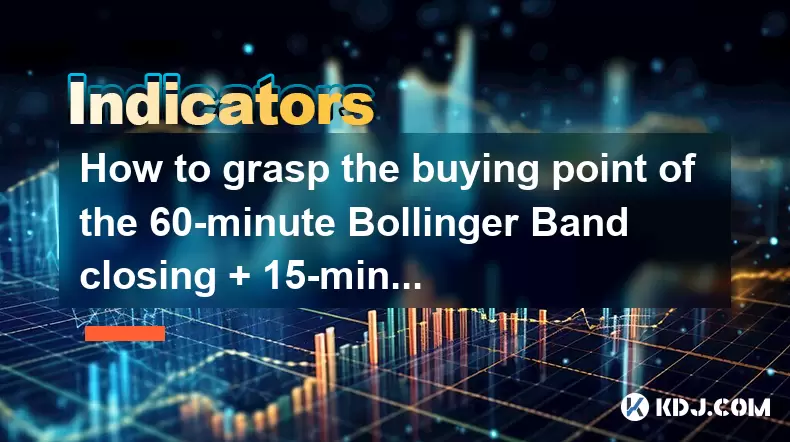
How to grasp the buying point of the 60-minute Bollinger Band closing + 15-minute MACD bottom divergence?
Jun 16,2025 at 12:03am
Understanding the Bollinger Band Closing Signal on a 60-Minute ChartThe Bollinger Band closing signal refers to a situation where the price closes outside the upper or lower band and then re-enters it in the subsequent candlestick. In this context, we focus on the lower Bollinger Band closing, which indicates a potential reversal from a downtrend. On th...
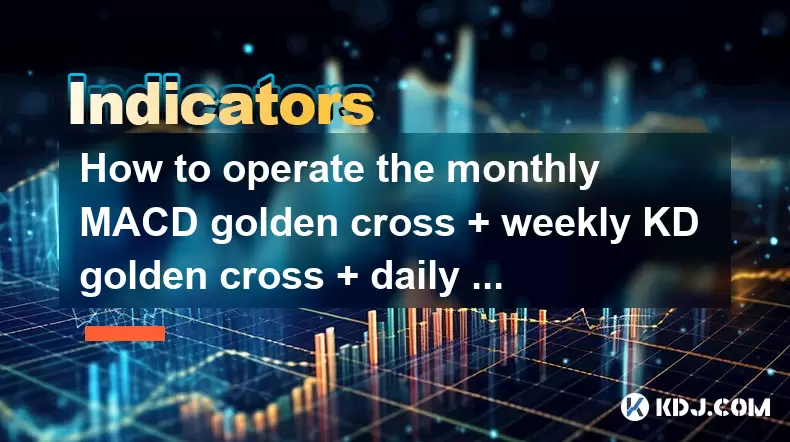
How to operate the monthly MACD golden cross + weekly KD golden cross + daily volume breakthrough?
Jun 15,2025 at 05:36am
Understanding the Strategy: Monthly MACD Golden CrossTo effectively operate the monthly MACD golden cross, traders must first understand what this signal entails. The MACD (Moving Average Convergence Divergence) golden cross occurs when the MACD line crosses above the signal line on a given chart timeframe. When this happens on the monthly chart, it sug...
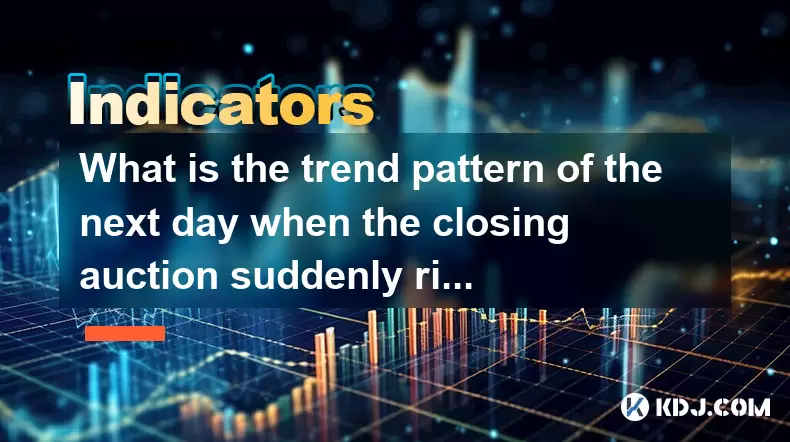
What is the trend pattern of the next day when the closing auction suddenly rises?
Jun 15,2025 at 08:15am
Understanding Closing Auctions in Cryptocurrency MarketsIn the context of cryptocurrency trading, a closing auction refers to a mechanism used by exchanges to determine the closing price of an asset at the end of a trading session. This process typically occurs within a short time window before the market closes for the day and aims to provide a fair an...

What does it mean when the volume fluctuates during the sideways trading at high levels?
Jun 15,2025 at 10:28am
Understanding Volume Fluctuations in Sideways TradingWhen volume fluctuates during sideways trading at high levels, it refers to the changes in the number of assets traded over a given period while the price remains relatively stable, moving within a defined range. This phenomenon typically occurs when the market lacks a clear directional bias—neither b...
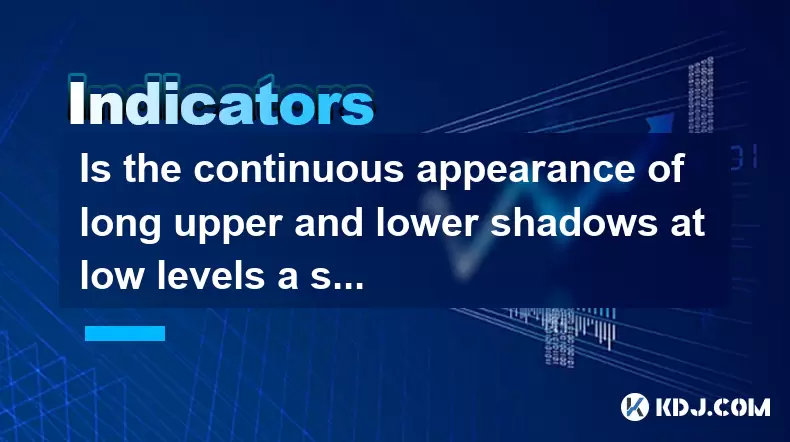
Is the continuous appearance of long upper and lower shadows at low levels a signal of accumulation?
Jun 15,2025 at 01:43am
Understanding Long Upper and Lower Shadows in Candlestick ChartsIn the world of cryptocurrency trading, candlestick patterns are widely used to analyze price movements. A long upper shadow, also known as a wick or tail, indicates that the price rose significantly during the period but was pushed back down by selling pressure. Conversely, a long lower sh...
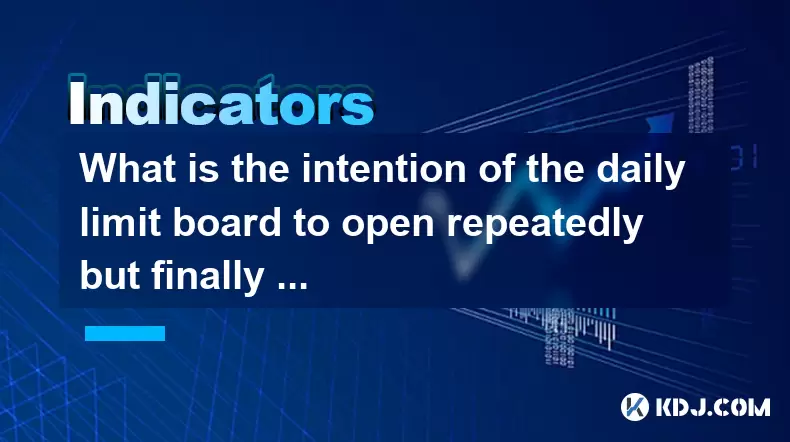
What is the intention of the daily limit board to open repeatedly but finally close?
Jun 15,2025 at 01:08am
Understanding the Daily Limit Board in Cryptocurrency TradingIn cryptocurrency trading, a daily limit board refers to a price movement restriction mechanism applied by certain exchanges or regulatory bodies. This mechanism is primarily used to prevent extreme volatility and panic selling or buying during periods of intense market fluctuation. When an as...

How to grasp the buying point of the 60-minute Bollinger Band closing + 15-minute MACD bottom divergence?
Jun 16,2025 at 12:03am
Understanding the Bollinger Band Closing Signal on a 60-Minute ChartThe Bollinger Band closing signal refers to a situation where the price closes outside the upper or lower band and then re-enters it in the subsequent candlestick. In this context, we focus on the lower Bollinger Band closing, which indicates a potential reversal from a downtrend. On th...

How to operate the monthly MACD golden cross + weekly KD golden cross + daily volume breakthrough?
Jun 15,2025 at 05:36am
Understanding the Strategy: Monthly MACD Golden CrossTo effectively operate the monthly MACD golden cross, traders must first understand what this signal entails. The MACD (Moving Average Convergence Divergence) golden cross occurs when the MACD line crosses above the signal line on a given chart timeframe. When this happens on the monthly chart, it sug...

What is the trend pattern of the next day when the closing auction suddenly rises?
Jun 15,2025 at 08:15am
Understanding Closing Auctions in Cryptocurrency MarketsIn the context of cryptocurrency trading, a closing auction refers to a mechanism used by exchanges to determine the closing price of an asset at the end of a trading session. This process typically occurs within a short time window before the market closes for the day and aims to provide a fair an...

What does it mean when the volume fluctuates during the sideways trading at high levels?
Jun 15,2025 at 10:28am
Understanding Volume Fluctuations in Sideways TradingWhen volume fluctuates during sideways trading at high levels, it refers to the changes in the number of assets traded over a given period while the price remains relatively stable, moving within a defined range. This phenomenon typically occurs when the market lacks a clear directional bias—neither b...

Is the continuous appearance of long upper and lower shadows at low levels a signal of accumulation?
Jun 15,2025 at 01:43am
Understanding Long Upper and Lower Shadows in Candlestick ChartsIn the world of cryptocurrency trading, candlestick patterns are widely used to analyze price movements. A long upper shadow, also known as a wick or tail, indicates that the price rose significantly during the period but was pushed back down by selling pressure. Conversely, a long lower sh...

What is the intention of the daily limit board to open repeatedly but finally close?
Jun 15,2025 at 01:08am
Understanding the Daily Limit Board in Cryptocurrency TradingIn cryptocurrency trading, a daily limit board refers to a price movement restriction mechanism applied by certain exchanges or regulatory bodies. This mechanism is primarily used to prevent extreme volatility and panic selling or buying during periods of intense market fluctuation. When an as...
See all articles

























































































